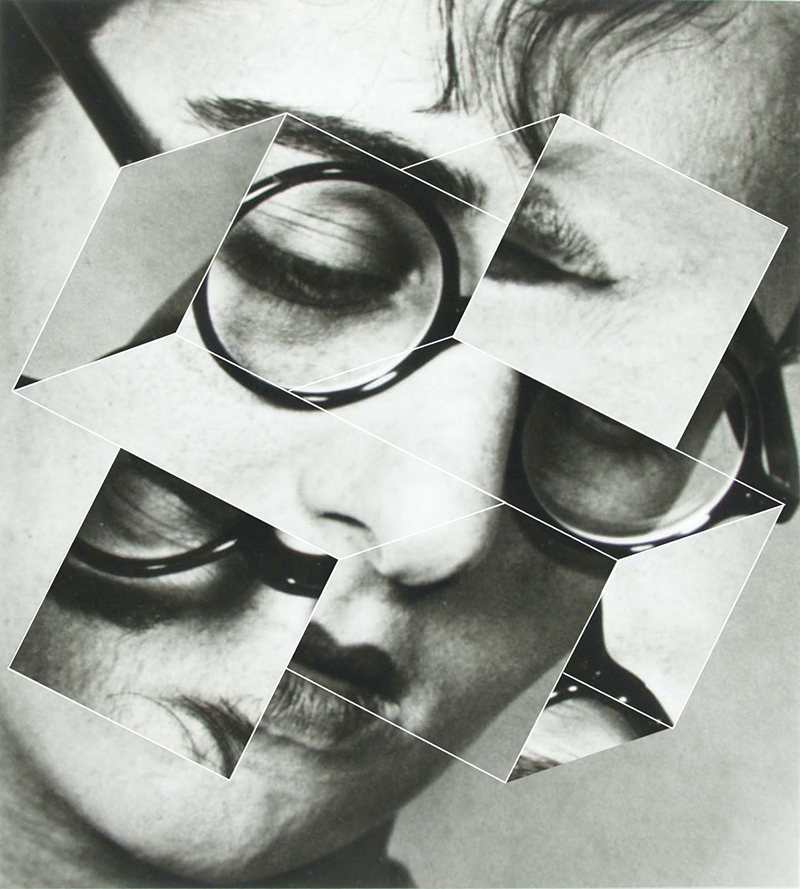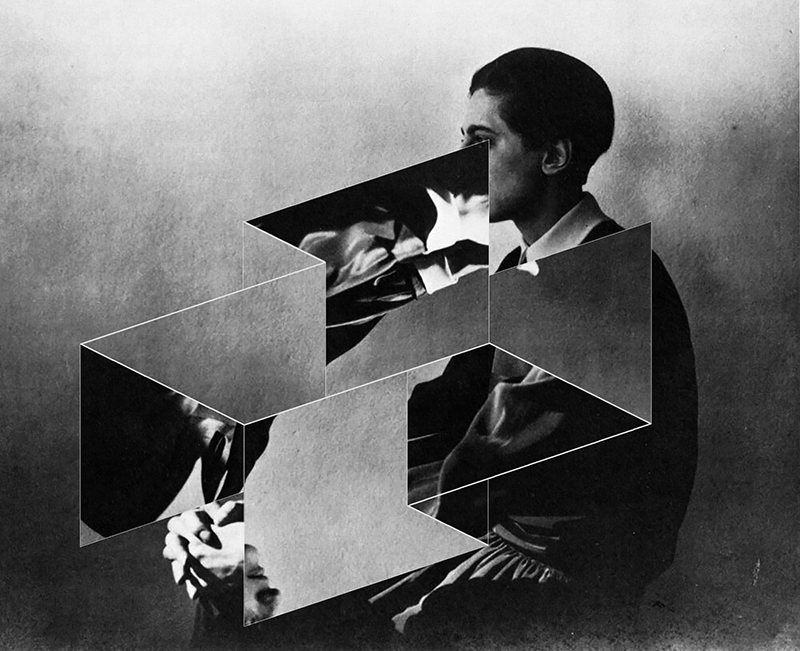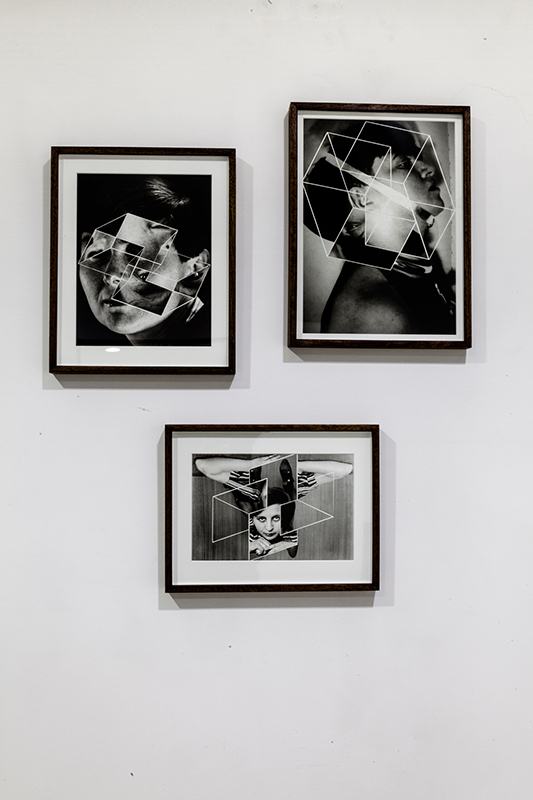
Asterism (After Grete Stern)

Asterism (After Ani Albers)

Asterism. Installation Parque Galleria, Mexico City, Mexico.
Asterism is a series of nine collages based on black-and-white historical portraits of women integral to the Bauhaus School. Geyer cut and reconstructed each photograph according to inverted patters of lines appropriated from celebrated Bauhaus instructor Josef Albers's series of drawings and engravings Structural Constellations.
The Bauhaus, which operated from 1919 to 1933 in Germany, is known for a revolutionary approach to design that was significantly shaped by women through a combination of craft, fine art, and utility; however, these women, who were not only teachers but also shop leaders and students, remain largely absent from the histories of the modernist institution. When they are acknowledged, they are most often relegated to areas of study that were considered suitable for their gender. Joseph Albers—husband of influential textile artist and printmaker Anni Albers—was one of the most prominent professors at the school. In his Structural Constellations series, made from the late 1940s through the early 1960s, he experimented with visual ambiguity, using unique and variable geometric forms and configurations that could not exist in reality.
For Asterism, Geyer reconfigured the portraits simultaneously away from and toward representation, using Albers’s constellation vectors as a lens to think through the historical fate of Bauhaus women who’ve been seen mainly through the prisms of their male counterparts.
Included in this series are:
Asterism (after Anni Albers)
Asterism (after Bauhaus Staircase)
Asterism (after Benita Koch-Otte)
Asterism (after Friedl Dicker)
Asterism (after Gertrude Arndt)
Asterism (after Grete Stern)
Asterism (after Lucia Moholy)
Asterism (after Marianne Brandt)
Asterism (after Marta Erps-Breuer, Katt Both, Ruth Hollóos-Consemuller)